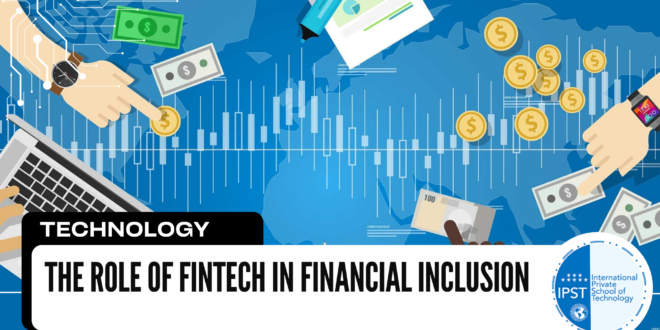Table of Contents
- Introduction to Fintech and Financial Inclusion
- The Impact of Fintech on Economic Development
- Key Technologies Driving Fintech Innovation
- How Fintech Is Promoting Financial Inclusion
- Challenges and Risks in the Fintech Sector
- The Future of Fintech and Financial Inclusion
Introduction to Fintech and Financial Inclusion
Fintech, or financial technology, refers to the use of innovative digital tools and technologies to improve financial services. It encompasses a wide range of applications, from mobile payments and lending platforms to blockchain and cryptocurrency. One of the most significant impacts of fintech is its role in promoting financial inclusion, which refers to the ability of individuals, especially in underserved communities, to access affordable and convenient financial services.
Traditionally, many people in developing regions have been excluded from formal financial systems due to factors such as lack of access to physical banking branches, high transaction costs, and limited credit history. Fintech has emerged as a powerful solution, offering digital platforms that allow individuals to access financial services through their smartphones or other devices, even in remote areas.
The Impact of Fintech on Economic Development
Fintech has been a driving force in economic development, particularly in emerging markets. By enabling access to financial services for previously underserved populations, fintech promotes economic empowerment, reduces poverty, and fosters entrepreneurship. Financial inclusion through fintech allows individuals and businesses to save, invest, borrow, and transact more efficiently, leading to improved financial stability and increased economic activity.
In many developing countries, fintech platforms are helping small businesses secure loans, allowing them to grow and create jobs. Additionally, digital payments have made it easier for businesses to engage in trade and commerce, both locally and internationally. As a result, fintech has contributed to the overall economic growth and development of these regions.
Key Technologies Driving Fintech Innovation
Several technologies are at the heart of fintech innovation:
- Blockchain and Cryptocurrencies: These technologies enable secure, transparent, and decentralized financial transactions. Cryptocurrencies, such as Bitcoin and Ethereum, are becoming increasingly popular for cross-border transactions and investment.
- Mobile Payments: Mobile payment platforms like PayPal, M-Pesa, and Venmo are revolutionizing how individuals and businesses make transactions, offering faster and more secure methods for exchanging money.
- Artificial Intelligence (AI) and Machine Learning: AI is being used to create more personalized financial services, including credit scoring, risk assessment, and fraud detection, which is crucial for expanding access to financial products in underserved areas.
- Digital Lending Platforms: These platforms use alternative data, such as mobile phone usage and transaction history, to assess creditworthiness and provide loans to individuals and businesses that may not have access to traditional banking services.
How Fintech Is Promoting Financial Inclusion
Fintech has played a critical role in expanding financial inclusion by offering a variety of services that cater to the unbanked and underbanked populations. Mobile banking, digital wallets, and peer-to-peer lending platforms allow individuals to engage in financial activities without needing to visit a physical bank. These services are particularly valuable in rural areas, where traditional banking infrastructure may be limited or nonexistent.
By leveraging mobile technology, fintech companies can offer affordable and convenient financial services to people who have previously been excluded from formal financial systems. This has helped bridge the gap between the wealthy and the poor, empowering individuals to manage their finances, save for the future, and access credit to start businesses or make investments.
Challenges and Risks in the Fintech Sector
While fintech has brought significant benefits, it also presents some challenges and risks:
- Regulatory Concerns: As fintech grows, governments and regulators face challenges in creating appropriate regulations to protect consumers and ensure the stability of financial systems. Striking a balance between fostering innovation and protecting consumers is crucial.
- Cybersecurity Risks: The rise of digital financial services has increased the potential for cybercrime and data breaches. Fintech companies must invest heavily in cybersecurity to protect users’ sensitive financial information.
- Digital Divide: In some regions, access to smartphones and reliable internet connections is still limited, which can hinder the adoption of fintech solutions and exacerbate existing inequalities.
- Financial Literacy: While fintech offers powerful tools, it also requires a certain level of financial literacy. Many individuals in underserved communities may lack the knowledge to navigate digital financial services effectively.
The Future of Fintech and Financial Inclusion
The future of fintech looks promising, with continued advancements in technology and a growing focus on financial inclusion. As more people gain access to the internet and smartphones, the potential for fintech to reach underserved populations is immense. The integration of technologies like AI, blockchain, and digital wallets will further enhance the accessibility and affordability of financial services.
Governments and organizations are also working to create more inclusive financial systems by implementing policies that promote fintech innovation while ensuring consumer protection. The growth of fintech is expected to drive significant changes in the global financial landscape, contributing to greater economic stability and growth worldwide.
Link out to external resources
 International Private School of Technology المدرسة الدولية الخاصة للتكنولوجيا Private School مدرسة خاصة للتكوين المهني
International Private School of Technology المدرسة الدولية الخاصة للتكنولوجيا Private School مدرسة خاصة للتكوين المهني


